Utopian Mirage: Social Metaphors in Contemporary Photography and Film, currently on view at the Frances Lehman Loeb Art Center in Poughkeepsie, NY until July 29th, is an unusual exhibit for the Loeb and for most museums. Rather than a collection of well-established artists' pieces borrowed from museums and prestigious collections, this exhibition focuses on younger, up-and-coming artists with pieces borrowed from contemporary art galleries to comment upon this popular theme. The exhibit was curated by Mary Kay Lombino, who has been at the Loeb for barely 2 years, has taken the museum in this direction by also curating Off The Shelf: Contemporary Artists' Books which featured contemporary artists like Brian Belott and Beatriz Milhazes.
Unfortunately, Off The Shelf was a much more successful exhibit in choosing a varied and interesting group of new artists. Utopian Mirage's inclusions were less consistent and the extensive notes that accompany the exhibit seem at pains to justify every choice. Regardless, the exhibit does manage to make an interesting comment on the concept of utopia. Rather than the typical representations of utopia in books and films, which are temporal, this exhibit only depicts utopia through photographs and short films. Without the unraveling of a plot, inevitably showing how any utopia is deeply flawed, the photographs in particular seem to cut to the chase.

J. Bennett Fitts, whose work was also recently on display this past summer at the Julie Saul Gallery, shows the ruins of the American dream: emptied, dirty pools that almost become indistinguishable from the lifeless landscape that surrounds them. Utopia is clearly something that has long deserted these leisurely-cum-dangerous pools.
Unique to this exhibit, the work of Carlos Garaicoa seems to function in the opposite way. Rather than reflecting upon a brighter past, Garaicoa's photographs edited with string project possible futures. The artist takes photographs of derelict spaces and uses string to imagine them becoming grander structures, such as large buildings or bridges. Some are reconstructions, which appear better in string 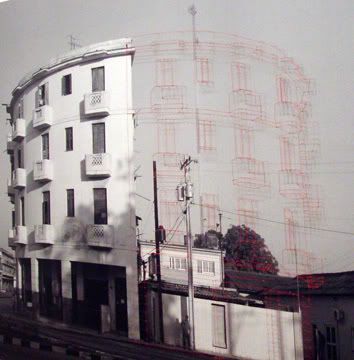 than they ever were in brick, and others are projections. The brightly colored, yet thin strings are hopeful but tenuous.
than they ever were in brick, and others are projections. The brightly colored, yet thin strings are hopeful but tenuous.
 than they ever were in brick, and others are projections. The brightly colored, yet thin strings are hopeful but tenuous.
than they ever were in brick, and others are projections. The brightly colored, yet thin strings are hopeful but tenuous.Tom Bamberger's digitally created panorama "Dark California Homes" emphasizes the disturbing sameness of suburban houses. The same issue was once noted by Dan Graham in his magazine piece "Homes for America," but Bamberger calls attention to the same phenomenon that has now spread to middle and upper class households producing a monoculture.
The exhibit's suggestions about utopia are bleak; the mirage is not a perfect island off into the distances, but rather a problem either insidious or blatant that stands right in front of us. Only a few viable suggestions are offered--environmentalism, new construction--but the audience's obligations and responsibilities towards a utopia are left open.
Above: J. Bennett Fitts, Salton Sea; Carlos Garaicoa, Untitled
Above: J. Bennett Fitts, Salton Sea; Carlos Garaicoa, Untitled
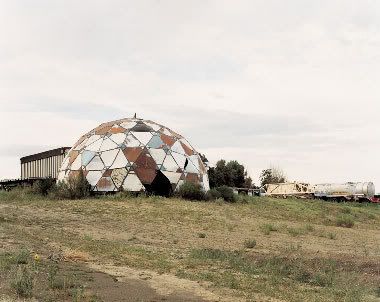
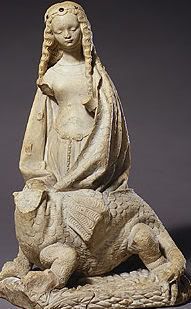
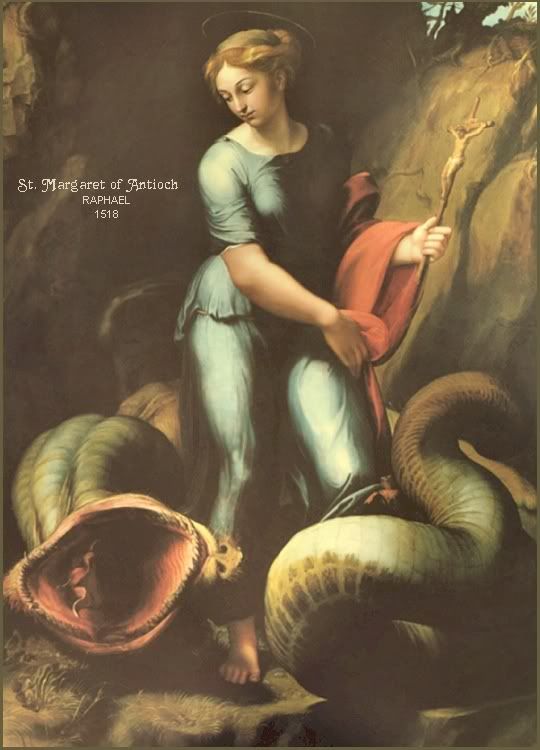


 This weekend I attended Garnerville's
This weekend I attended Garnerville's 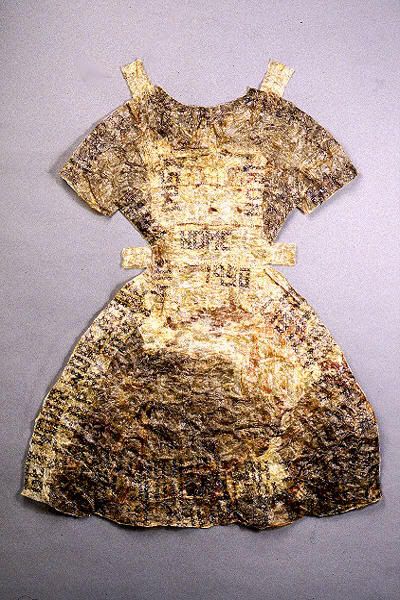 Regardless, I did manage to find an artist whose work I really enjoy, Pat Hickman. A former professor and head of Fiber Arts program at University of Hawaii, Hickman's work is reminiscent of Kiki Smith's in material and occasionally style, but very distinct in tone and themes. Hickman's most striking work is created from organic materials, most commonly pig's intestines. Although the material she uses is one that would evoke disgust from most viewers, she transforms the material into a beautiful, thin golden skin-like material, such as in the piece to the right titled "One Size Fits All." The piece takes insides and turns them into outsides--clothes. But only superficially, as the piece itself admits by mimicking a paperdoll dress.
Regardless, I did manage to find an artist whose work I really enjoy, Pat Hickman. A former professor and head of Fiber Arts program at University of Hawaii, Hickman's work is reminiscent of Kiki Smith's in material and occasionally style, but very distinct in tone and themes. Hickman's most striking work is created from organic materials, most commonly pig's intestines. Although the material she uses is one that would evoke disgust from most viewers, she transforms the material into a beautiful, thin golden skin-like material, such as in the piece to the right titled "One Size Fits All." The piece takes insides and turns them into outsides--clothes. But only superficially, as the piece itself admits by mimicking a paperdoll dress.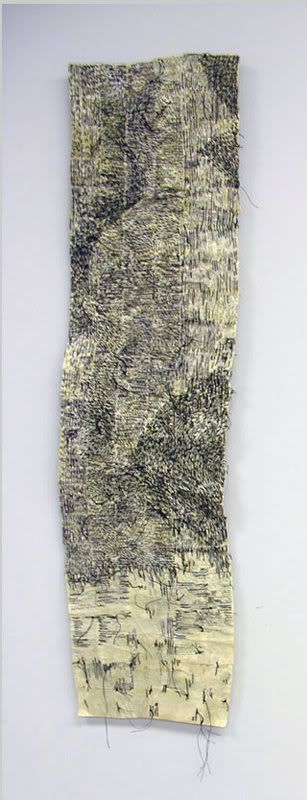 Another piece, "The Beginning of the Beginning," pictured on the left, uses notes and thread to create a tapestry of what looks like, upon close inspection, a series of small paper notes and to do lists. The threads cross off the items on the notes; the tasks are completed and subsumed into the larger work.
Another piece, "The Beginning of the Beginning," pictured on the left, uses notes and thread to create a tapestry of what looks like, upon close inspection, a series of small paper notes and to do lists. The threads cross off the items on the notes; the tasks are completed and subsumed into the larger work.